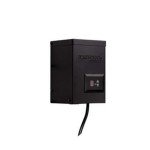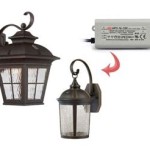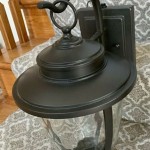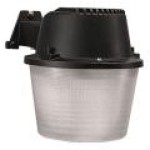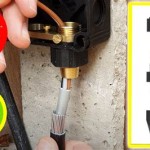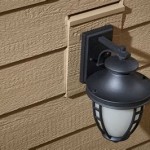Outdoor Mercury Vapor Lamp Assembly: An Exploration
Outdoor mercury vapor lamps, also known as MV lamps, have been a staple in outdoor lighting for decades. Their ability to produce a bright, white light and operate efficiently made them popular choices for streetlights, parking lot lighting, and other outdoor applications. However, the popularity of mercury vapor lamps has declined in recent years due to environmental concerns related to mercury content and an increasing preference for more energy-efficient LED alternatives. Despite this, understanding the assembly of these lamps remains relevant for maintenance purposes and for comprehending the evolution of lighting technology.
Components of an Outdoor Mercury Vapor Lamp Assembly
An outdoor mercury vapor lamp assembly consists of several key components that work together to produce light. These components include:
- Lamp: The heart of the assembly, the mercury vapor lamp itself, is a sealed glass tube containing a small amount of mercury and an inert gas. When electricity passes through the gas, it excites the mercury atoms, causing them to emit ultraviolet radiation.
- Ballast: The ballast is a crucial component that provides the necessary voltage and current to ignite and operate the lamp. It also regulates the flow of electricity to the lamp, ensuring a stable and consistent light output.
- Socket: The socket holds the lamp in place and provides a connection point for the electrical wiring. It is typically made of metal or ceramic to withstand high temperatures.
- Reflector: The reflector directs the light emitted from the lamp in a specific direction. This can be achieved using parabolic or other types of reflectors, allowing for efficient illumination of a desired area.
- Glass Enclosure: The lamp assembly is often enclosed in a glass housing to protect the components from the elements and enhance the overall aesthetics.
- Mounting Bracket: The mounting bracket secures the lamp assembly to a pole or other structure.
Working Principle of an Outdoor Mercury Vapor Lamp Assembly
The operation of a mercury vapor lamp assembly involves several steps:
- Starting: When power is applied to the assembly, the ballast provides a high voltage to the lamp. This initiates an arc between the electrodes inside the lamp, causing the inert gas to ionize.
- Warm-up: The arc heats the mercury in the lamp, causing it to vaporize. This vaporized mercury is then excited by the electrical current, releasing ultraviolet radiation.
- Light Emission: The ultraviolet radiation emitted from the mercury vapor interacts with a phosphor coating on the inside of the lamp. This coating absorbs the ultraviolet radiation and re-emits it as visible light, creating the characteristic bright white light associated with mercury vapor lamps.
- Ballast Regulation: The ballast continuously monitors the current and voltage flowing through the lamp, adjusting them to maintain a stable operating temperature and light output.
Advantages and Disadvantages of Outdoor Mercury Vapor Lamps
Outdoor mercury vapor lamps have several advantages that contributed to their widespread use in the past. These include:
- High Light Output: Mercury vapor lamps produce a bright, white light, making them effective for illuminating large areas.
- Energy Efficiency: Compared to traditional incandescent lamps, mercury vapor lamps were relatively energy-efficient, consuming less power for the same light output.
- Long Lifespan: Mercury vapor lamps are known for their long lifespan, often lasting for several years with proper operation.
- Low Operating Costs: The combination of high light output, energy efficiency, and long lifespan results in lower operating costs compared to some other lighting options.
However, mercury vapor lamps also have several disadvantages, leading to their decline in popularity:
- Mercury Content: The presence of mercury in the lamps raises environmental concerns, as mercury is a toxic heavy metal. Improper disposal of mercury vapor lamps can lead to soil and water contamination.
- Long Warm-up Time: Mercury vapor lamps take several minutes to reach full brightness, making them unsuitable for applications requiring immediate illumination.
- Poor Color Rendering: The light emitted from mercury vapor lamps has a poor color rendering index, meaning it can distort the appearance of colors. This can be a concern in applications where accurate color perception is important.
- Fragile Construction: The glass tube of mercury vapor lamps can be fragile, making them susceptible to damage during transportation or installation.
With the growing emphasis on environmental sustainability and the availability of more efficient and versatile lighting technologies, mercury vapor lamps are gradually being phased out. While they continue to operate in some existing installations, their use is expected to further decline as newer lighting solutions like LED lamps become more widely adopted.

Mercury Vapor Lighting Greenbuildingadvisor

How To Retrofit High Pressure Sodium And Mercury Vapor Light Bulb With Led

The Mercury Vapor Vs Led Debate Action Services Group

Mercury Vapor Landscape Lighting Conversion To Led Outdoor

Mercury Vapour Lamps Eye Lighting

Mercury Vapor Industrial Light And Power

Led White Mercury Lamp Type Of Lighting Outdoor

H80dx Hid Mercury Vapor Lamp Aamsco Lighting

What Is A Mercury Vapor Light Bulb

H250dx Hid Mercury Vapor Lamp Aamsco Lighting
Related Posts
